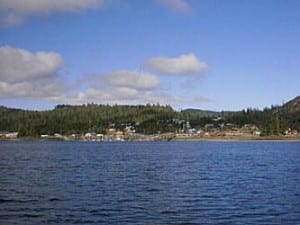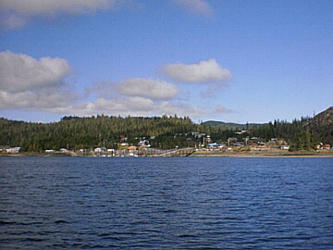An official with the Alaska Department of Transportation says the agency still plans to spray herbicide for weed control along a section of state-owned road on Prince of Wales Island next year.
The DOT had planned to spray along 17 miles of state roadway near Thorne Bay this year. That spraying did not happen. DOT’s statewide maintenance and operations chief Mike Coffey said the department did not have the personnel to complete a required study of wetlands in that area. “We have to do a wetlands delineation before we apply herbicides,” Coffey said. “Applying herbicides to any kind of water body, whether it’s a pond, or even just wetlands, requires extra permits. So our whole objective is to avoid any wetlands, wet areas. So it was just a matter we just didn’t have time to get that done this year.”
Coffey said the DOT does plan to go forward with the herbicide spraying near Thorne Bay in 2015 but on a more limited basis. “So we’re gonna scale back to a more just targeted, site distance areas, around guardrails and signs, that kind of thing. But we are still looking at doing an application this spring or summer.”
The DOT is still required to give public notice of their intent to spray. The state agency no longer needs a state permit from the Alaska Department of Environmental Conservation, a permitting hurdle that required a public comment period. The DEC removed that requirement in 2013.

Thorne Bay (Photo courtesy Department of Commerce, Community and Economic Development; Division of Community and Regional Affairs’ Community Photo Library)
The DOT filed a revised Integrated Vegetation Management Plan with the DEC this year outlining plans to begin spraying along with traditional methods of mowing or pulling weeds. That plan covers road sides, airports and other DOT lands around Alaska. The Thorne Bay road was the first spot in Southeast that DOT had planned for the spraying. At the moment, Coffey said the Thorne Bay site is the only one in Southeast planned for spraying but the DOT is reviewing its plans for next year. “Herbicides are just one of the tools we have where mechanical methods and all aren’t effective or can actually do more harm than good,” he said. “So again, we’re really trying, we’re doing our best to be very environmentally sensitive when we’re doing this.”
The DEC regulation changes and DOT plans for spraying have sparked opposition around Southeast. Residents are concerned with chemicals lingering in plants and berries gathered near the side of the road or leaking into fish streams or drinking water.
Communities like Thorne Bay and Petersburg have passed resolutions against herbicide use. Skagway passed an ordinance prohibiting the application of herbicides and Petersburg is considering a similar measure.
A bill introduced by Democrats in the Alaska House last year sought to require buffer zones along salmon streams and re-instate public comment opportunities. It received no hearings but legislators have vowed to re-introduce that bill in the upcoming session.
Other plans for herbicide applications were filed with the state this year in Southeast, one for Ketchikan airport and another by the White Pass and Yukon railroad near Skagway.










